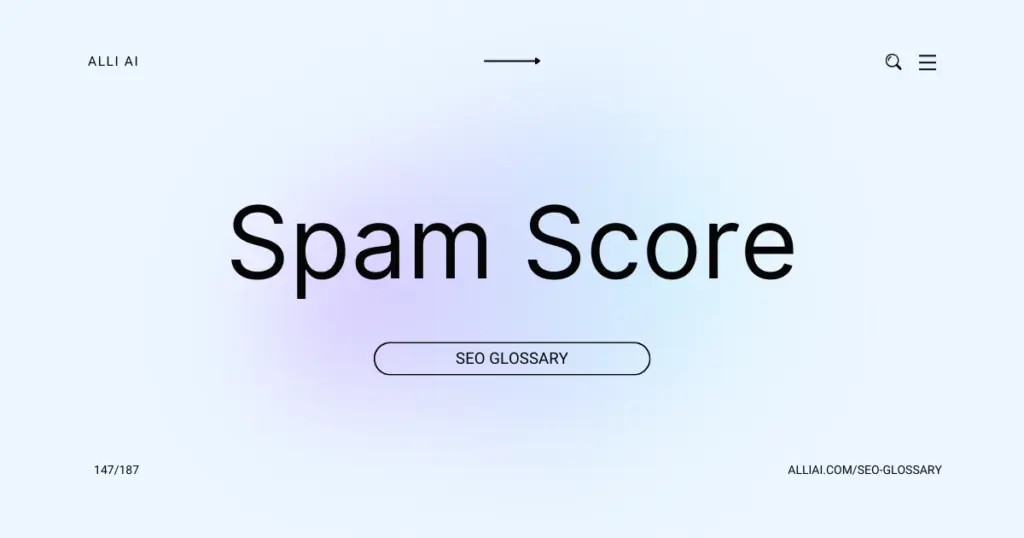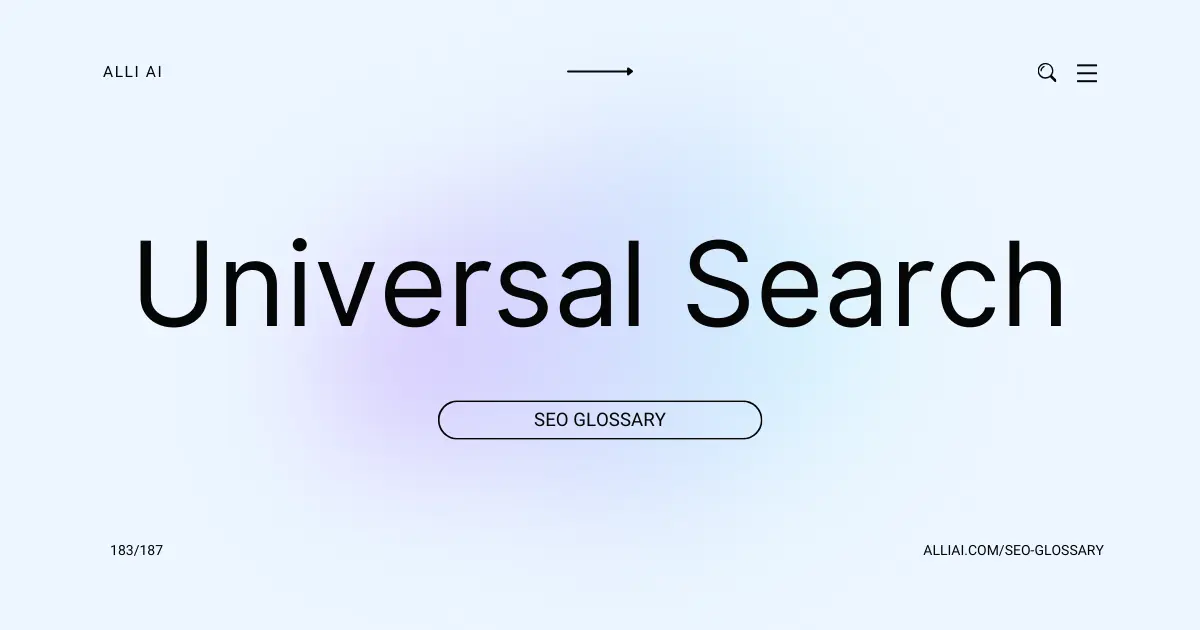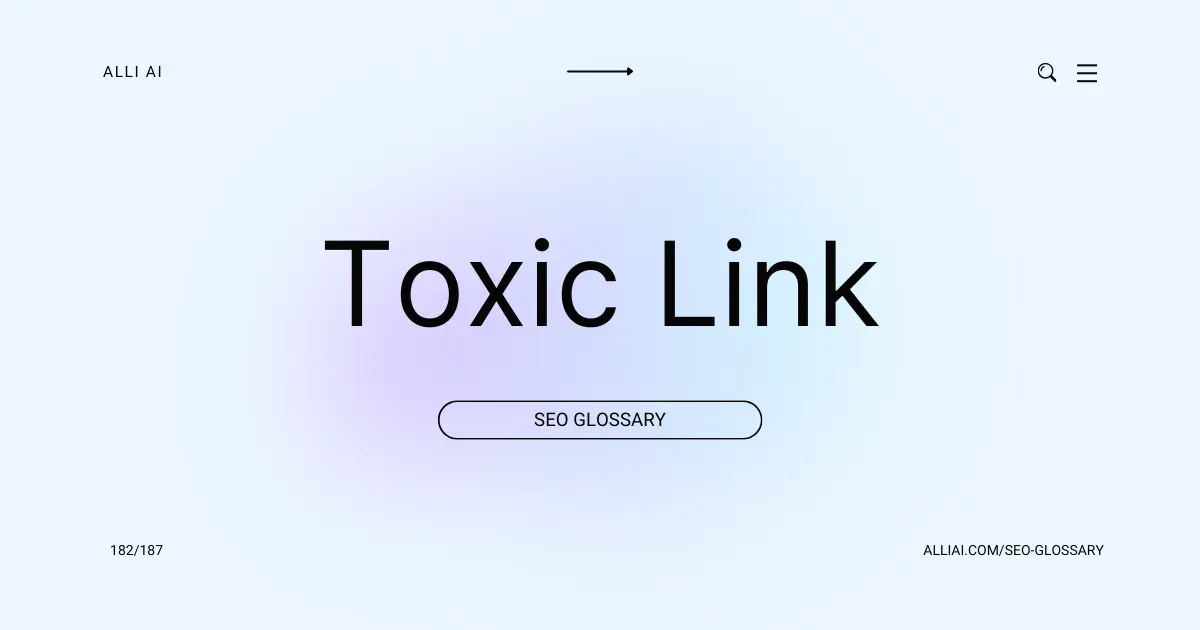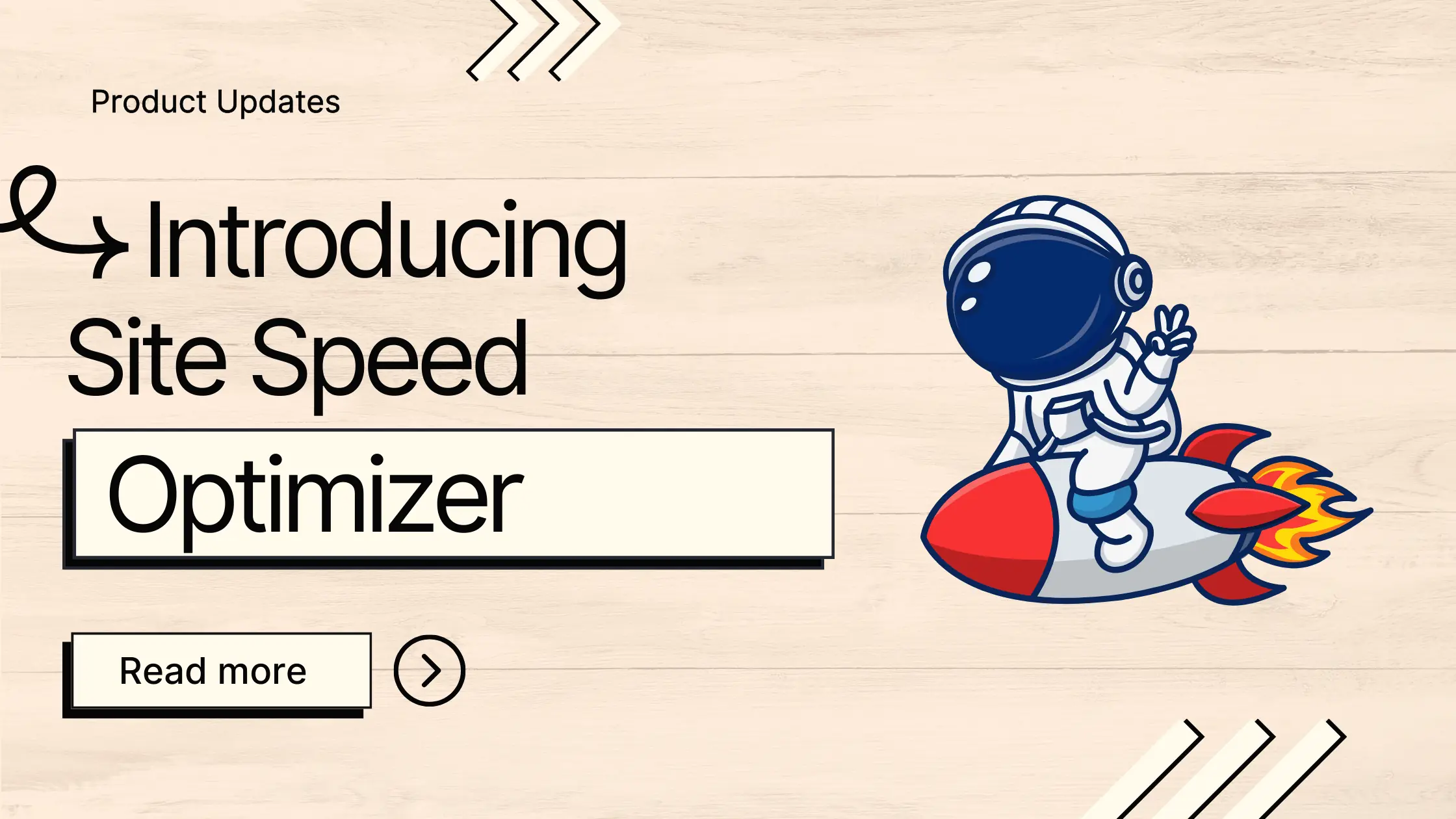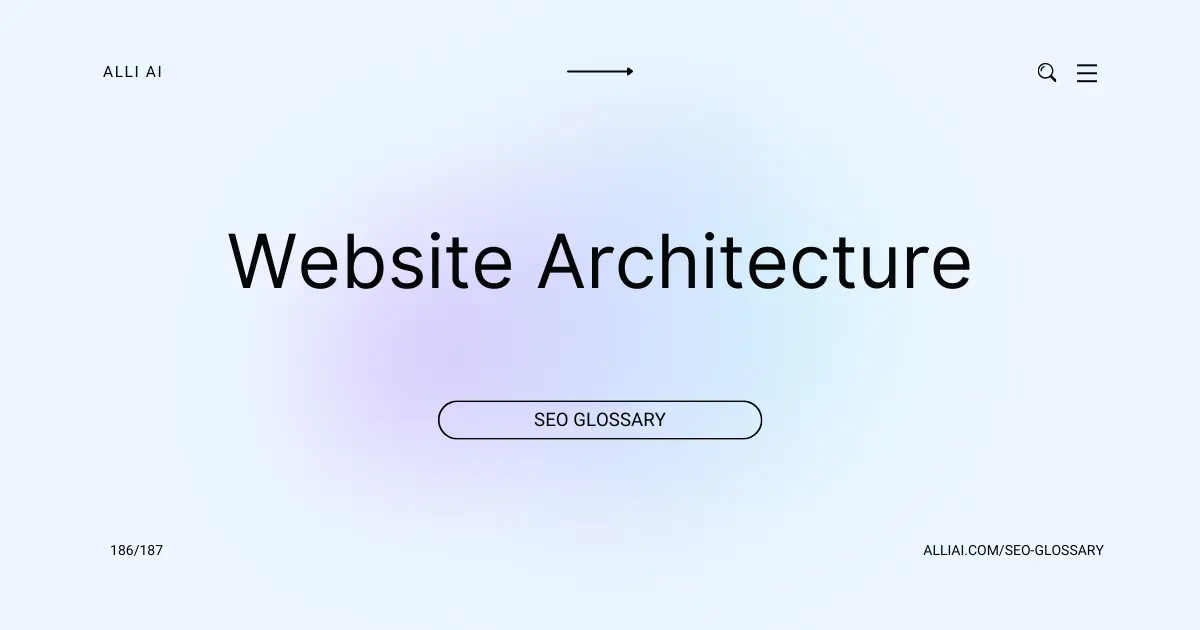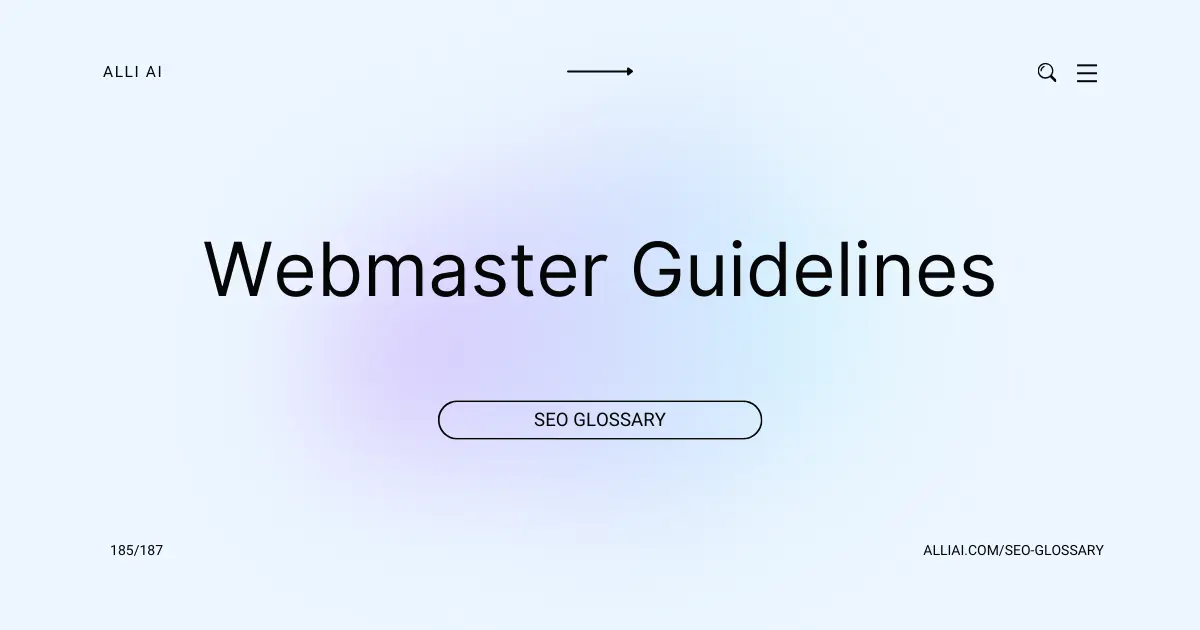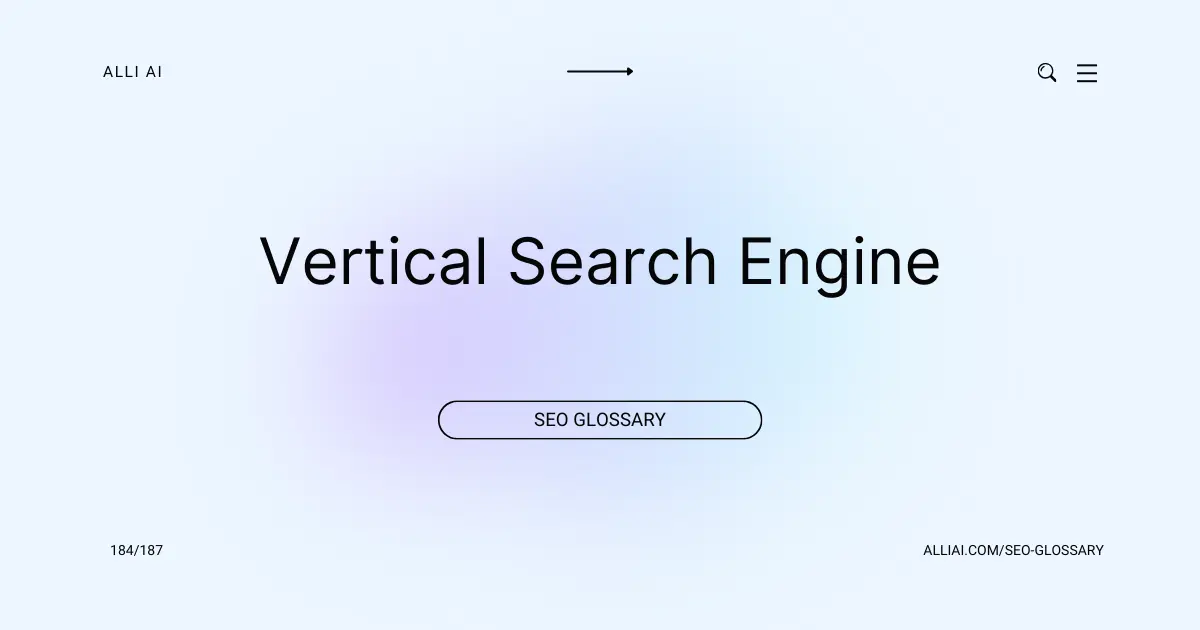What Does Spam Score Mean?
Spam Score is a metric developed by Moz that estimates the likelihood of a website being penalized or banned by search engines based on certain characteristics that are commonly found in spammy websites. It is presented as a percentage, with a higher score indicating a greater chance of being flagged as spam.
Where Does Spam Score Fit Into The Broader SEO Landscape?
Spam Score is a metric developed by Moz that helps assess the likelihood that a website will be penalized by search engines like Google due to practices that violate their guidelines. It is expressed as a percentage, indicating the potential risk level of spammy activities on a website.
In the SEO landscape, Spam Score serves as an important risk assessment tool. SEO professionals use it to audit backlinks and identify potentially harmful links from sites with high Spam Scores, which could negatively impact their search engine rankings. A high Spam Score on inbound links can suggest low-quality links, which might be perceived by search engines as manipulative or untrustworthy efforts to boost page rankings.
Removing or disavowing links from high Spam Score sites helps improve the site’s link profile, which is a crucial factor in SEO performance. Moreover, keeping an eye on one’s own website’s Spam Score assists in ensuring that they adhere to best SEO practices and maintain a positive reputation with search engines, thereby safeguarding their website from penalties and drops in rankings.
Real Life Analogies or Metaphors to Explain Spam Score
Spam Score in SEO is like a cholesterol reading for your website. Just as high cholesterol can signal health risks, a high Spam Score from Moz’s tools indicates potential risks in your website’s link profile, possibly hurting its ranking on search engines much like how clogged arteries can impair heart health.
Consider Spam Score as being similar to a credit score for borrowing money. A high credit score means you’re a safe bet; similarly, a lower Spam Score suggests your site is trustworthy in the eyes of search engines. Conversely, a higher Spam Score, like a poor credit score, could make search engines wary of your site, possibly leading to less visibility, just as banks might hesitate to lend money to someone with bad credit.
Spam Score is akin to a weed detector in your garden. Just as you want to catch and remove weeds before they spread and damage your garden, you should monitor your Spam Score to identify and address potentially harmful backlinks that might spread and degrade your site’s SEO health.
How the Spam Score Functions or is Implemented?
1. Data Collection: Spam Score is initially based on the collection of web data, identifying domains that have been penalized or flagged as spam by search engines.
2. Feature Identification: Tools like Moz’s Spam Score analyze a range of on-page factors and site characteristics that correlate with spammy behavior. Common markers include large numbers of external links, thin content, and hidden text.
3. Scoring Model: A machine learning model is trained using the identified features and example sets of spammy and non-spammy sites. This model calculates the probability that a similar site could be penalized by search engines.
4. Threshold Setting: A threshold is set for classifying websites as spammy or not based on the probability output from the model. For example, sites might be marked as high risk if they score above a certain threshold.
5. Continuous Updates: The algorithm periodically updates based on new data, spam techniques, and feedback from users, maintaining relevancy and accuracy of the spam score.
Impact Spam Score has on SEO
The Spam Score, developed by Moz, is a metric used to gauge the likelihood that a website behaves like a spam site based on various features of the site’s profile. While not a direct factor used by Google to rank websites, a high Spam Score can indirectly affect a website’s SEO performance and rankings. Websites with high Spam Scores may be seen as less trustworthy by search engines and users, potentially reducing their visibility in search results and deterring user engagement. This mistrust can lead to lower traffic and a reduced likelihood of earning quality backlinks, which are crucial for ranking. Moreover, websites flagged with a high Spam Score often provide poor user experiences, either due to the presence of intrusive ads, poor quality content, or deceptive practices, all of which can increase bounce rates and further harm the site’s ability to rank well. Hence, monitoring and maintaining a low Spam Score is crucial for optimizing a website’s SEO performance and enhancing user experience.
SEO Best Practices For Spam Score
1. Identify the Source:
– Use Moz’s Link Explorer to evaluate your site’s spam score.
– Review detailed information to pinpoint which backlinks are potentially harmful.
2. Conduct a Backlink Audit:
– Gather a list of all backlinks to your site.
– Assess the quality of each link, looking at the authority and relevance of the linking site.
3. Remove Low-Quality Links:
– Contact the owners of spammy sites requesting the removal of links to your site.
– Keep records of your communication attempts.
4. Disavow Toxic Links:
– Prepare a list of links you couldn’t remove.
– Use Google’s Disavow tool to inform Google about these links so they won’t be considered in your site’s ranking.
5. Improve On-Site SEO:
– Ensure that your site’s content is high-quality, relevant, and provides user value.
– Enhance site structure, speed, and mobile responsiveness.
6. Regularly Monitor Your Spam Score:
– Periodically check your spam score using SEO tools like Moz.
– Regularly update your backlink profile and on-site content based on findings.
Common Mistakes To Avoid
1. Over-Optimization of Keywords: Stuffing keywords can spike your spam score. Use natural language and ensure keywords fit organically into your content.
2. Low-Quality Content: Thin or duplicated content across pages can raise spam flags. Focus on providing unique, valuable, and relevant content.
3. Manipulative Link Building: Engaging in link schemes or buying links can increase your spam score. Build links naturally and through legitimate partnerships.
4. Hidden Text and Links: Using text that is the same color as the background or positioning text off-screen can be seen as deceptive, increasing your spam score.
5. Excessive Use of Ads: An overload of intrusive ads can impact user experience and be flagged by search engines.
6. Irrelevant Redirects: Redirecting users to unrelated pages can be seen as manipulative and harm your ranking.
7. Hosting on a Low-quality Server: Sharing your server with spammy sites can impact your spam score. Opt for reputable hosting services.
8. Cloaking and Sneaky Redirects: Showing different content to users than to search engines is a violation of guidelines.
9. Mixed Content Issues: Having both secure (HTTPS) and non-secure (HTTP) content on your site can be problematic.
10. Poor User Engagement Metrics: High bounce rates and low time-on-site can indirectly indicate to search engines that your site might be spammy.
11. Ignoring Technical SEO: Neglecting aspects like sitemap, robots.txt, and site architecture can contribute to a higher spam score.
12. Lack of Social Media Presence: Insufficient social validation through shared content can affect trustworthiness and increase spam score.
Each of these activities can be mitigated by adopting best practices in SEO, focusing on quality and user experience, and adhering strictly to search engine guidelines. Regular audits and adjustments based on analytical data can also help maintain a healthy site profile.
